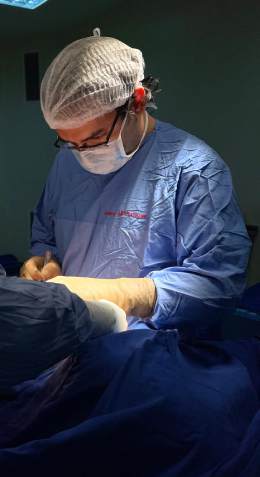Breast Augmentation - Augmentation Mammoplasty

Breast Augmentation - Augmentation Mammoplasty
Breast augmentation, also known as augmentation mammoplasty, is a surgical procedure aimed at increasing the size, shape, or fullness of the breasts using implants or fat transfer. It is one of the most popular cosmetic procedures worldwide and is sought after by individuals looking to enhance the appearance of their breasts for various reasons.
The term "breast augmentation" comes from the Latin word "augmentare," meaning to increase or enlarge. During the procedure, implants made of silicone gel or saline solution are inserted into the breast tissue or placed behind the chest muscle to achieve the desired size and shape. Alternatively, fat transfer involves harvesting fat from another part of the body through liposuction and injecting it into the breasts to add volume.
People choose breast augmentation for a variety of reasons, including a desire for larger breasts, improved breast symmetry, or to restore breast volume lost after weight loss, pregnancy, or breastfeeding. Breast augmentation can also enhance self-confidence and body image for individuals who feel dissatisfied with the size or shape of their breasts.
While breast augmentation is generally considered safe, like any surgical procedure, it carries certain risks and potential complications. These may include infection, bleeding, adverse reactions to anesthesia, implant rupture or leakage, changes in breast sensation, and capsular contracture (the formation of scar tissue around the implant). Additionally, there may be aesthetic risks such as asymmetry, visible scarring, or dissatisfaction with the outcome.
Despite these risks, breast augmentation is a widely performed procedure with a high satisfaction rate when performed by a qualified and experienced plastic surgeon. Ideal candidates for breast augmentation are generally in good overall health, non-smokers, and have realistic expectations about the outcome of the procedure. They may be bothered by one or more of the following concerns:
- Small or underdeveloped breasts that lack fullness or proportion.
- Asymmetrical breasts, where one breast is noticeably smaller than the other.
- Loss of breast volume and firmness after pregnancy, breastfeeding, or weight loss.
- Desire for a more balanced and proportionate figure.
It's important for individuals considering breast augmentation to thoroughly research the procedure, discuss their goals and concerns with a board-certified plastic surgeon, and carefully consider the type of implants, incision location, and other factors that will affect the outcome of the surgery.
In conclusion, breast augmentation is a cosmetic procedure aimed at enhancing the size and shape of the breasts using implants or fat transfer. While it carries some risks, it can provide significant aesthetic benefits and improve self-confidence for individuals seeking to enhance their breast appearance. However, it's essential for those considering breast augmentation to choose a qualified surgeon, understand the potential risks and benefits, and have realistic expectations about the outcome of the surgery.




